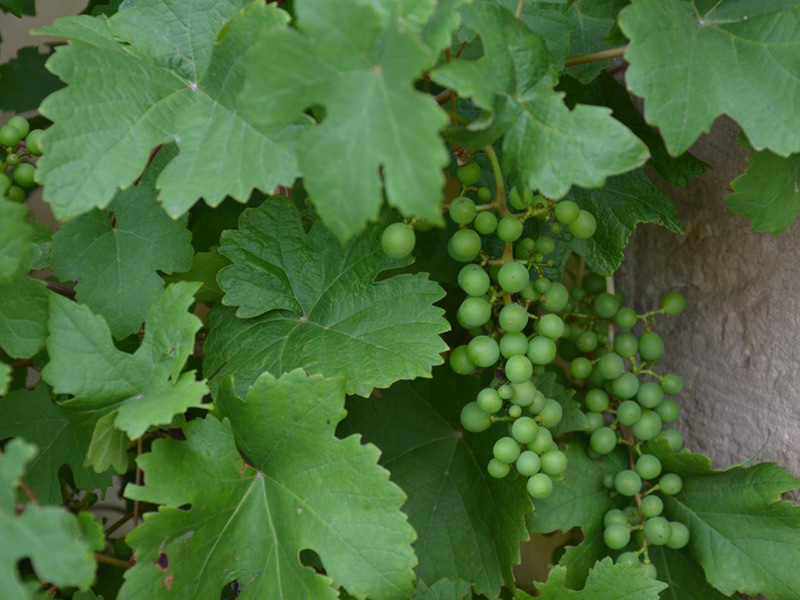What’s in season? Grape leaves!
Our Harvest Kitchen crew uses these tannin-rich leaves to keep our pickles crispy, without affecting the flavor. Fresh grape leaves are best picked from grape vines in the late spring and early summer, while they are still tender and unsprayed.
Harvesting Tip: Try to pick grape leaves early in the day. During this time period, no grapes are visible on the grape vines. Be sure to pick leaves that have never been sprayed with chemicals. There are many wild grape leaves growing freely in our region!
Select young, whole, medium-size leaves (4- to 5-inches wide) with a good light-green color and no holes. Note: leaves that are too small will tear when using. Leaves that are too large are tough and chewy. The leaves should also be shiny and smooth. Avoid fuzzy, thick leaves. Grape leaves thicken and toughen as the sun ages them. For the recipe below, it can be helpful to also pick 10 more mature leaves.
Try This from Chef Jen!
Lebanese Stuffed Grape Leaves (Warak Enab)
Stuffing ingredients:
1-1/2 c. rice — uncooked, parboil
1 lb. ground beef or lamb (To make this recipe Vegetarian, use 1-16oz can of chickpeas, rinsed and slightly mashed)
2 large onions — grated
3–4 fresh tomatoes — small dice (or 1 8oz jar crushed tomatoes)
1/4 c. olive oil
1 T fresh parsley — chopped
2 T fresh mint — chopped
1 tsp. allspice
1 T cumin
2 T kosher salt
2 T black pepper — freshly ground
Other Ingredients
50–60 fresh grape leaves (or 1 16oz jar brined grape leaves, drained and rinsed in cool water)
1 large potato — sliced into 1/4″ thick slices
Juice of 2 lemons
4 c. water
1 T salt
1 T olive oil
Instructions
- Line the bottom of a heavy pot with slices of potato. Add a layer of grape leaves, and set pan aside. (Note: When harvesting your grape leaves, it can be helpful to pick 10 mature leaves — 5 for lining the pan, and 5 for covering the top.)
- Mix stuffing ingredients in a mixing bowl. Both meat and rice remain uncooked in the stuffing. Set aside.
- To stuff and roll the grape leaves, lay a grape leaf flat on a cutting board, scoop out a heaping teaspoon of the rice mixture into the center of the grape leaf and form it into a “log” shape. Carefully fold in the sides of the leaves, and roll it like you would when making a wrap. The trick is to roll the leaf tightly enough so that it doesn’t unravel while cooking — but not too tightly, since the rice needs room to expand as it cooks.
- Neatly arrange the stuffed, rolled grape leaves in rows, alternating directions, to completely cover the circumference of your pot. Once all of grape leaves are added to the pot, place a flat layer of mature grape leaves over the top.
- Place a small, round plate on top of the grape leaves in the pot to hold them down and prevent floating while they are cooking.
- Add lemon juice, water and salt. Gently press on the plate covering the grape leaves. The salt mixture should cover the top of the grape leaves when gentle pressure is on the plate.
- Place a cover on the pan. Cook on medium-low heat until gently boiling (approx. 45 minutes).
- To check for doneness, remove a stuffed grape leaf from the top-middle of the pan. The rice stuffing should be cooked all the way through. Additional salt or lemon juice can be added to taste. Add a small amount of water only if the rice remains uncooked and seems dry.
- Once cooked, let rest for 30 minutes. Then enjoy!



